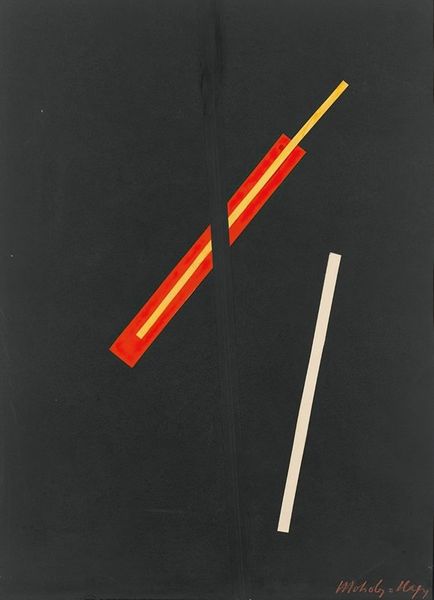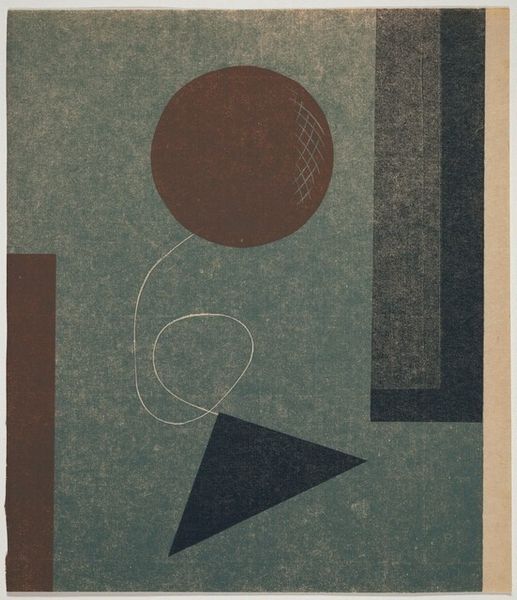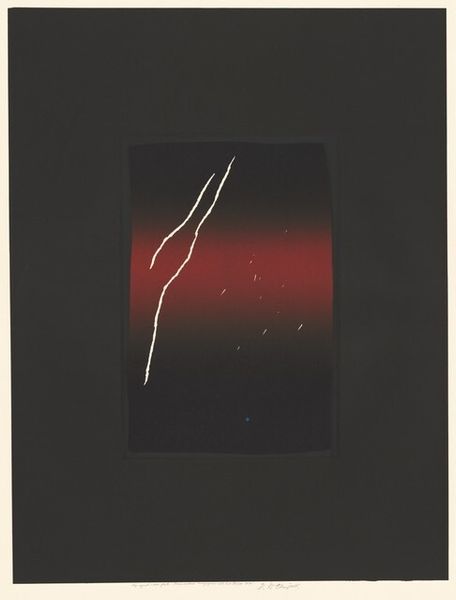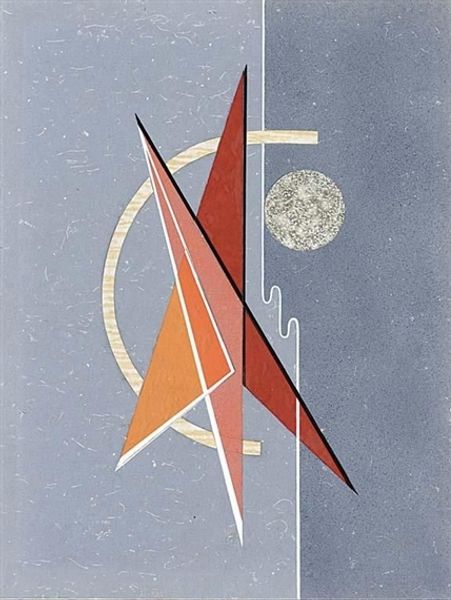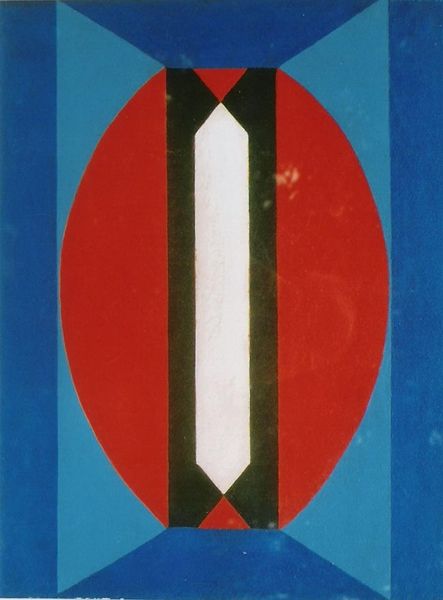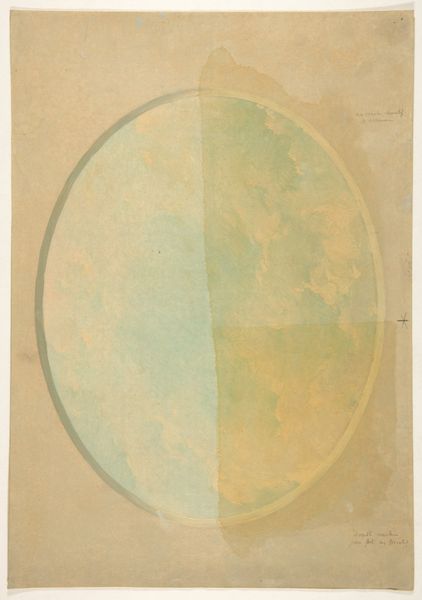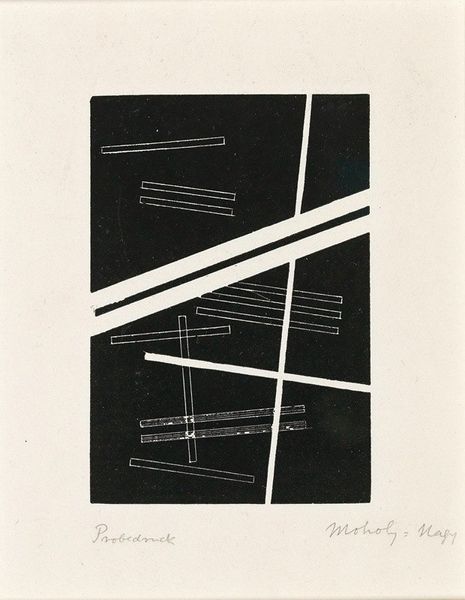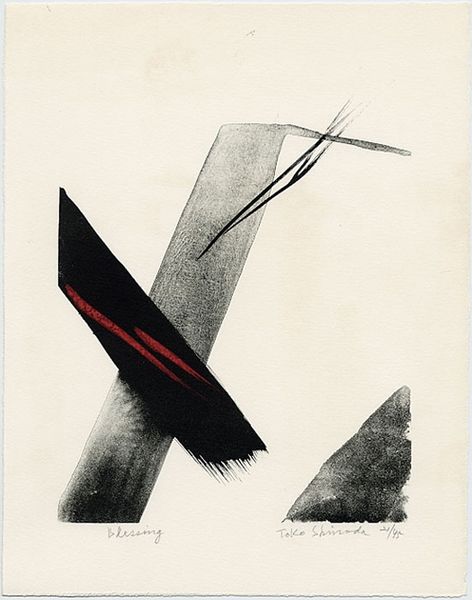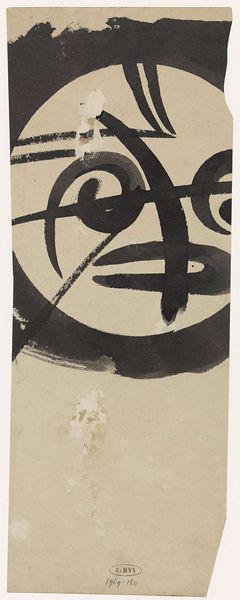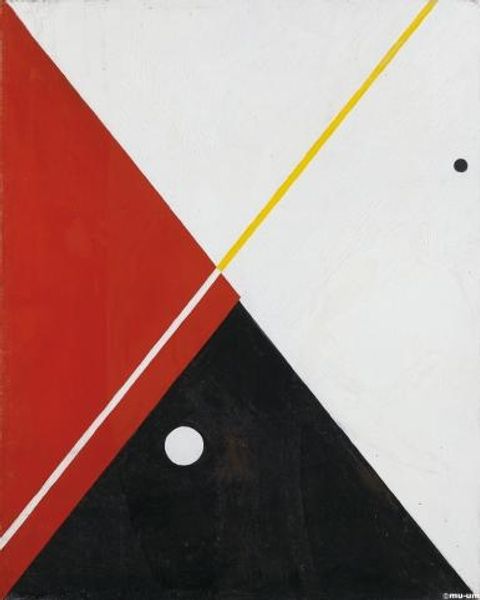
drawing
#
drawing
#
constructivism
#
form
#
geometric
#
abstraction
#
line
Dimensions: overall (approximate): 58.9 x 46.3 cm (23 3/16 x 18 1/4 in.)
Copyright: National Gallery of Art: CC0 1.0
Curator: Moholy-Nagy's drawing, simply titled "Q", created between 1922 and 1923, immediately strikes me as quite playful despite its geometric rigidity. Editor: Playful? I find it incredibly austere. It’s all sharp lines and stark contrasts against that deep black background. Are those... industrial materials he’s evoking? Steel, perhaps, or some kind of synthetic polymer? Curator: I see it as a carefully considered arrangement. It's constructivism, after all, rooted in a utopian vision of art integrated with technology and industry, reshaping society. It's likely ink or pigment on paper, the craft and composition itself speaking volumes, defying those traditional hierarchies. The drawing itself, as an object, reflects those tensions between fine art and mass production. Editor: Right, and that utopian drive was itself a response to the trauma of World War I. We see artists grappling with the role of art in a world scarred by technological warfare, seeking to build anew, quite literally with new forms, and hopefully contributing to a different social sphere than before. Curator: Precisely! Consider the weight placed on each line, each circle. Are they simply aesthetic choices, or are they symbolic gestures towards that industrialised future they envisioned, materials playing an essential role in shaping a better world? Look at the application of the medium. It’s a calculated performance. Editor: That red circle—a bold splash against the somber background—almost feels like a revolutionary emblem. It feels politically charged in many ways, even if it appears minimalist on the surface. I also want to understand how a piece like this circulated. How did it impact contemporary movements at the Bauhaus? What institutions helped to disseminate its vision? Curator: An essential question! And perhaps the most enduring element here. To truly explore how these visions shaped, and continue to shape, the artistic landscape, one must look into all its details of execution and conception, materials and its original context. Editor: A complex interplay, where simple forms reveal the weight of historical and material circumstances.
Comments
No comments
Be the first to comment and join the conversation on the ultimate creative platform.
